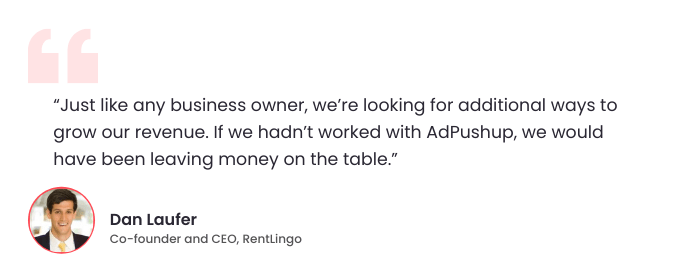The ‘Ad Blocking’ phenomenon is on its way to being a mainstream discussion topic, but it’s not at the stage just yet where publishers can rest easy. Some estimates say that as much as $78 billion of ad spending goes to waste because users block the ads they don’t want to see.
With such a major chunk of ad money going to waste, how can web publishers maximize their revenues?
Also Check: Adblock Recovery Calculator
Ad blocking has become a challenge for publishers, with an increasing number of visitors who refuse to allow ads to be loaded into the browsers on their devices.
It has plenty of scope for misunderstanding and exaggeration, so it’s important that you’re well-equipped to deal with the issues arising from the increased use of ad blockers and how you can combat them.
What’s the Whole Ad Blocking Fuss about?
Simply put, Ad Blocking is the act of displaying a website without showing any ads on it. Publishers need to know that people use ad blockers for a variety of reasons, including avoiding ads and the time it takes to render advertising-heavy websites. Some people don’t like ads, being tracked, or want to use the internet without being interrupted by advertising content.
It’s estimated that more than 42.7% of users around the globe have used ad blocking software or plan to do so. But what does this mean for publishers? Ad-blocking has a disruptive impact on publishers and its wider impact on the business model of online content. It is changing the way people interact with media and what they listen to, watch, read and buy.
A good percentage of revenue streams are dependent on advertising; therefore, it’s likely that some web publishers will experience reductions in their income as a result of ad blockers becoming more popular among users.
There’s no doubt that misconceptions about ad blocking are also slowing investment in ad blocking solutions. Media companies should know what is really going on with ad-blocking before they invest in solutions that don’t work and put publishers at risk of losing money — or worse — audience.
Also Check: Recover Lost Ad Revenue through Adblock Recovery Software
5 Ad Blocking Misconceptions that Publishers Should Know
Let’s take a look at the 5 most popular ad-blocking misconceptions that publishers should know!
Ad Blocking is About Rejecting All the Ads
Previously Ad-blockers were considered a shield against intrusive ads. But nowadays, Ad blockers have been termed as “selective ad blocking,” which is defined as rather than rejecting all ads, you have the option to see ads that are relevant and unobtrusive—which is also known as “Acceptable Ads”, and there are approximately 46.2% of users worldwide participate in this new kind of ad blocking. It brings a browsing experience that is free from glittery pop-ups and intrusive ads.

Native Ads Are Never Affected
Due to its inconspicuousness, native advertising has become the “favoured ad style” for several advertisers. Since they are discreet, they are positioned as the “favoured ad style” and are said to be “faster and more successful than traditional advertisements.”
Ad blockers are designed to block both standard and native advertisements. Traditional ad servers are their goal, but they can also snare non-traditional advertising that targets certain readers who employ ad blocks.
A Shift from Ad-Blocking to Ad-Filtering
The shift from ad-blocking to selective ad-filtering has opened up new opportunities for online users who want ad-light experiences. The concept of total ad-blocking is already declining, and the new digital world is where only relevant content and ads coexist, and publishers are able to increase their revenue.
But unfortunately, some publishers remain sceptical and are still using traditional measures for ad-blocking. An alternative measure for publishers could come through Acceptable Ads, which offers a digital ads supply chain ecosystem to the publishers and advertisers who want to reach a large demographic and convenient light-touch advertising that helps to sustain content creators.
Publishers need to seek alternative options to deliver an ad-light experience and avoid blocking all forms of advertising.
Intrusive Ads Are The Main Targets
Ad Block is not really a “block” or blocker, it’s an ad filter that only allows a few select ads through. Ad Blocks has no idea who an advert is targeting. It isn’t even necessarily focused on blocking the specific ad – just the page element that it appears on. This means that even ads you may be fine with being shown, for example, for a car dealership in your local newspaper, will get blocked by AdBlock.
Ad blockers do not block only intrusive ads. They allow whitelisted ads to be displayed in your browser. A white list is essentially a group of sites that have been tested and reviewed by the user base as being safe, unobjectionable and non-intrusive.
Ad Blockers are For Tech and Gaming Sites
Many publishers believe that ad blockers only affect popular gaming and tech sites however, as more people become aware of the problems faced by publishers, they are adopting these devices to get around them. As they become more popular and tech-savvy, consumers who don’t want to pay for content can misuse this option with extreme accuracy.
A study by ad blocker provider Secret Media found that a quarter of its readers use an ad blocker, with 26% from fashion and lifestyle sites, 29% from entertainment, 28% from science and a staggering 55% from gaming. To tackle this growing problem, publishers must experiment with new ways to make ads more appealing to readers.
Also Read: Chrome Update: Google Will Start Blocking Intrusive Ads In Short Videos
Tips to Prevent Users from Blocking the Ads on your Website
As a web publisher, ads are a must-have tool in your revenue kit. Here’s how you can deliver a better experience to prevent users from blocking the ads on your website.
Better User Experience is The Key
By analyzing how users interact with your pages and ads, you can get a better understanding of what they do and what keeps them from completing their tasks. By evaluating timeout settings, header bidding success rates and other metrics, you can make informed decisions about future development and optimizations. A seamless user experience helps retain users and generate more revenue.
Acceptable Ads are the Solution for Publishers
The Acceptable Ads Standard applies on both desktop and mobile devices, which shows if ads aren’t too intrusive or annoying or if the users are fine with seeing them or not. The mechanism of Acceptable Ads includes three main categories; the first one is the placement of the ads that should not disrupt the user’s natural reading flow. The second one is the ad content that should be clearly distinguishable and labelled.
The last one is the size of the ads or the amount of space taken up by ads depending on their position. Furthermore, the acceptable ads mechanism fully considers user choice and control.
Acceptable Ads are also rising in popularity with publishers, as Acceptable Ads reached 200 million users worldwide as of March 2020. It’s like amongst the 100 digital publishers, 53 take ad blocking measures via Acceptable Ads. Browsers incorporating ad blocking with Acceptable Ads help to have the content users love to see. And it is a path toward a sustainable future for the ad publishers.
Choose the Right Tech Tools
You may employ tools to assist you to recover the money that ad blocks cost you in income. The 3rd party technology detects ad blockers and tries to furnish the ads that are blocked. These tools help us combat such technology, thereby making sure that our customers keep coming back to us for more good experiences.
Ad Blockers Are Not The End for Online Publishers
Publishers can’t stop ad blocking – but they should not have to as a way to battle this issue. Every publisher must have an ad blocking strategy in place, and it doesn’t matter if you are an online newspaper, online TV station or a global brand.
One thing is for sure: the ad-blocking issue will continue to cause a problem for publishers. So, it’s important that you understand how ad blockers work and explore various techniques available to stop the ad blocking traffic before you hit the jackpot and figure out what works best for you. You need to be up-to-date with the latest trends in your industry, learn how to crawl websites, and identify pages that are profitable and where most users are accessing ads.
We strongly suggest that publishers adopt methods that drive revenue from their audience on the web to never lose another penny to an ad blocker.
Frequently Asked Questions
Ad blockers are primarily used by internet users to prevent obtrusive, annoying, or repeated adverts and to speed up page loading times. But some consumers also use ad blockers to avoid monitoring due to data privacy concerns.
Ad blockers make use of filtering rules to conceal or prevent information, mainly ads, on a website. The ad blocker examines the site’s scripts when a page loads and compares them to a list of websites and scripts that it was designed to prevent. It stops or blocks them if it discovers any.
There are several reasons why ad blockers are beneficial. They help get rid of annoying adverts, which makes it simpler to read pages. And speed up the loading of websites.
Ad blockers and their users widen the gap between small and major creators by making it more difficult to monetize original content online. Ad blockers and their users also decrease the originality and creativity of the web by making it less profitable to produce original content.
Online publishers can follow these tips to beat the ad blockers:
a) Get whitelisted
b) Ask users to turn off their ad blockers
c) Improve user experience with high-quality content
d) Adopt native advertising practices
e) Target ads based on user “actions”

Shubham is a digital marketer with rich experience working in the advertisement technology industry. He has vast experience in the programmatic industry, driving business strategy and scaling functions including but not limited to growth and marketing, Operations, process optimization, and Sales.






